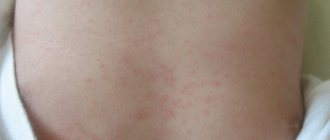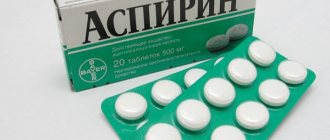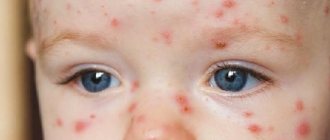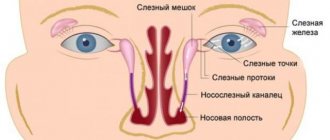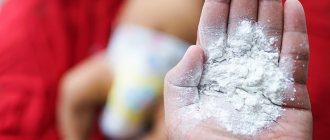In the life of every parent, sooner or later there comes a time when, suddenly, some acne appears on the body of their beloved child. It's a rash. A rash is any change on the skin. It occurs in many diseases and conditions, some of them are very dangerous.
Let's try to figure out what the rash is, in what cases it appears, what it is accompanied by, and how mom and dad should behave so that it goes away faster.
Let's start with the simplest thing - insect bites. Primarily mosquitoes. As a rule, this rash causes surprise in early spring and late autumn, when mosquitoes are not yet remembered or are already forgotten. In modern winter conditions, mosquitoes can live indoors (for example, in the basement) almost all year round. Of all family members, small children are the most “tasty” for mosquitoes.
Parents notice changes in the skin in the morning, after the child wakes up. Mosquito bites are characterized by the appearance of pink or reddish spots mainly on open areas of the body: hands, forearms, feet, legs, i.e. those parts of the body that are not covered by pajamas, and there must be elements on the face, or, sometimes, on one half of it (if the child slept on his side). Most often, this rash is accompanied by itching, but not very severe. The child's general condition does not suffer. He behaves as usual - plays, runs, throws things around, watches cartoons and eats with appetite. If the child is not allergic to mosquito bites, then they do not require special treatment. It is enough to turn on the fumigator in the children's room (now there are special ones for children), and the problem will be solved by itself. In case of a severe allergic reaction, accompanied by severe swelling, redness, severe itching, it is necessary to give the child an antiallergic drug (for example, suprastin). You can treat bites with drugs such as Psilobalm or Fenistil-gel, which relieve swelling and irritation.
The next fairly common situation in which a rash occurs is an allergic reaction. Typically this is a food allergy. There are children who have allergies from early childhood. Parents of such children know exactly what food can be given to their child and what not. And they know very well how to care for the skin in this situation. Now I would like to dwell in more detail on the problem of the sudden development of allergies in a previously healthy child. This situation can develop when eating previously unfamiliar foods, exotic fruits, vegetables, and seafood. Or if familiar dishes are prepared in a special way, using a large number of spices and aromatic additives. Or if your child, having lost control, ate a pack of chips, snacked on tangerines, chocolates and washed it all down with a carbonated drink.
An allergic reaction appears quite quickly. Red spots of irregular shape, prone to merging and accompanied by severe itching, appear on the skin of the entire body or individual areas (cheeks, buttocks, behind the ears). The child's general condition may change: he may be lethargic or, conversely, too excited. Sometimes there is vomiting or loose stools. But more often the child feels well, but is very itchy. How can you help your child in this situation? First of all, it is necessary to exclude from his diet foods that cause an allergic reaction, even if they are very tasty and he loves them very much. Then you need to give the child sorbents - drugs that will remove the allergen from the child’s body. These include activated carbon, smecta, zosterin-ultra, filtrum. It is mandatory to take antiallergic drugs (the same suprastin or other drugs from this group). Fenistil-gel and moisturizer are applied to the skin. It would be a good idea to see a pediatrician or dermatologist.
An allergic reaction can also occur when the skin comes into contact with some substances, such as washing powder, fabric softener, etc. In this case, the rash appears only in those areas that were in direct contact with the allergen. The tactics of parental behavior in this case are similar to those for food allergies. Additionally, the substance that caused the reaction should be removed from the skin - rinse off under running water.
Now it is necessary to dwell on a large group of infectious diseases accompanied by a rash.
Varicella (chickenpox).
The appearance of a rash is usually preceded by a slight malaise, and symptoms of a mild acute respiratory infection may be observed. Then a rash appears. At first there is not much of it - a few red spots. Every day more and more new spots appear, and the old ones turn first into a papule - a “bump” that protrudes slightly above the skin, then into a blister with transparent contents, and finally, the blister dries out and a crust forms, which after a while disappears. From the moment the first spot appears until the last crust falls off, about 10-15 days pass, during which the sick child is contagious. The chickenpox rash is spread throughout the body, including the scalp and mucous membranes (mouth, eyes, genitals). The appearance of a rash with chickenpox is accompanied by itching, sometimes quite severe. Therefore, you can use suprastin, fenistil gel or psilobalm that you already know.
A child's throat is hoarse and hoarse: reasons.
Hoarseness (a condition where the voice becomes shallow) is medically called dysphonia. It can appear in parallel with other symptoms (cough, runny nose, high fever), or it can occur independently when there is no fever or other symptoms of inflammation. The last option requires the most attention, since a hoarse voice without fever can indicate dangerous diseases.
The following reasons lead to a condition where a child’s throat may become hoarse and hoarse and his voice may become dry.
Make an appointment right now!
Call us by phone or use the feedback form
Sign up
- Viruses. Pathogenic microorganisms enter the baby’s body through the nasal cavity, and if nothing is done or treated at an early stage, the viruses penetrate lower into the pharynx and larynx, where they trigger the inflammatory process. Inflammation leads to swelling of the vocal cords, as a result of which the child’s throat may become hoarse and hoarse, and the voice may become dull. The disease occurs with a cough, runny nose, and fever. Such diseases include colds, flu, various forms of ARVI, etc.
- Infectious diseases such as laryngitis, tracheitis, pharyngitis, tonsillitis, diphtheria. With these diseases, not only can the throat become hoarse or hoarse, but the temperature can also rise to high levels. Most often, this inflammatory process, in which the voice deepens and the body temperature rises, is caused by a bacterial infection. These conditions must be treated under the supervision of an ENT doctor. If you do nothing and let the disease take its course, serious complications may arise.
For example, if a sore throat is not treated and procedures are not performed in an ENT clinic, problems with the heart, kidneys and joints may appear. The condition “diphtheria croup” is especially dangerous, in which hoarseness is one of the main symptoms. It can lead to death from suffocation.
- Allergy. An allergic reaction in a child, in which the voice deepens and the throat hoarses, is a very dangerous phenomenon. If your baby suddenly develops a hoarse or hoarse throat and has difficulty breathing, you should immediately call an ambulance, as suffocation may occur. What you can't do in this situation is panic. You need to calm the crying baby, because crying only aggravates the situation, give an antihistamine and wait for the doctors to arrive. In case of an allergic reaction, the following symptoms are also possible: runny nose, lacrimation, cough, fever.
- A foreign object in the child's larynx. Children are distinguished by their rare curiosity and during play can easily put small toys or their parts into their mouths and inadvertently swallow them. The smallest children cannot explain what happened. Therefore, if the baby is hoarse or hoarse, and his voice becomes dry without fever or other signs of inflammation, you need to be wary. What to do? First of all, show the child to an ENT doctor. Examination will reveal the presence of a foreign object in the larynx.
- Overstrain of the vocal cords. During the period of growing up, the child’s vocal cords are just developing, so due to prolonged crying or loud screaming, the baby can easily become hoarse or hoarse. In this case, signs of inflammation such as fever and runny nose will be absent.
- Burns of the larynx. It is not only hot food or liquid that gets into the larynx during a meal that makes the voice hoarse, but also steam inhalations, which some parents like to use to treat their children when the first signs of a cold appear (when the throat hurts, the voice deepens, the temperature rises).
- Neoplasms of the larynx. Hoarse ligaments without fever and other signs of infectious diseases can signal the presence of neoplasms in the larynx (papillomas, tumors, etc.)
- Voice goes down after sleep. It happens that the baby wakes up hoarse without fever or sore throat, but as soon as he clears his throat, everything goes away. In this case, the ligaments shrink due to too dry air in the apartment. What to do about it? There is no need to treat hoarseness. Buying an air humidifier solves the problem of hoarse ligaments in the morning.
- “Breaking” of a teenager’s voice. In boys, during the period of hormonal changes in the body, the ligaments may also shrink, and the throat may become hoarse without fever. You don't need to do anything about it. The hoarse ligaments will recover on their own - this is a variant of the norm.
A hoarse throat with or without fever is not as simple a symptom as it might seem at first glance. It can be a consequence of a common cold, or it can signal dangerous diseases. Therefore, when hoarseness appears, the first thing to do is to show the child to an ENT doctor.
Rubella.
With rubella, the rash appears almost simultaneously throughout the body, but is more pronounced on the face, chest and back. It looks like small pale pink spots, almost the same size. The rash is profuse. Disappears without a trace within 4 days. A characteristic sign of rubella is enlargement of the occipital lymph nodes. All this is accompanied by mild symptoms of acute respiratory infections. There is usually no special treatment for rubella. But all children aged 1 year are recommended to be vaccinated against rubella.
Diseases that cause rashes on the skin of children
Let's look at the types of rashes in a child in more detail depending on the disease.
- Chicken pox. Perhaps the most famous disease that is accompanied by a rash. With chickenpox, reddish spots appear on the entire surface of the body, which grow and become blisters filled with clear liquid. The growth of blisters is accompanied by itching, but over time they dry out and fall off, sometimes leaving characteristic “pockmarks”. Chickenpox often causes an increase in temperature, and doctors recommend treating the rash blisters with brilliant green.
- Measles. Initially, the rash in the form of large red spots appears on the face, but literally within 2-3 days it spreads “from top to bottom” throughout the body to the very feet. In addition, the child begins to have a sore throat, a runny nose and cough, and a fever. The largest spots merge into large inflamed areas.
- Meningococcal infection. The most dangerous infection, as it causes meningitis. It is very important to recognize the disease in time, as it develops very quickly. The rash appears as large spots that resemble bruises. If you consult a doctor as soon as possible, the likelihood of a cure is very high.
- Rubella. The rash is accompanied by fever and inflammation of the lymph nodes. A rash on the child’s body in the form of small red spots appears mainly on the buttocks and in places where the limbs are flexed. After a few days, the rash goes away without leaving any consequences.
- Scarlet fever. With scarlet fever, a rash in the form of small pimples appears on the second day throughout the body, but their greatest concentration is noted in the groin, in the folds of the arms and legs and in the lower abdomen. After a few days, the rash goes away, and the skin in these places begins to peel off severely. Also during the peak of the disease, swelling, rash and redness of the entire skin are noted.
- Enterovirus infection. Redness and rash appear on the third day after infection and last about two to three days. Other symptoms doctors note are vomiting, diarrhea, fever and general weakness of the body.
- Parasites. In this case, the rash is not caused by infections, but by scabies mites or other parasites living on the human body. The scabies mite “drills” holes into the skin, leaving entrances and exits in the form of points. The most “attractive” parts of the body for ticks are places with thin skin: the groin, wrists, areas between the fingers, etc. Since the tick can be transmitted from one person to another, urgent treatment is necessary after detection of this pathology.
- Cardiovascular diseases. As a rule, these diseases are not typical for children, although they do occur. Vascular disease can be recognized by small hemorrhages under the skin. Larger areas cause bruising.
Scarlet fever.
The disease begins acutely with high fever, sore throat when swallowing, and sore throat. At the beginning of the disease, the tongue is thickly covered with a white coating, then becomes bright red and shiny. The rash appears a few hours after the onset of the disease on the torso, limbs, with thickening in the natural folds of the skin (armpits, groin area). The rash is pink, pinpointed. In this case, the area around the mouth remains pale. After the rash disappears at the end of the first - at the beginning of the second week of the disease, peeling appears on the palms and soles. The disease is quite serious, because... leaves behind complications in the form of damage to the heart and kidneys. Requires mandatory prescription of antibiotics and a period of clinical observation with mandatory monitoring of blood and urine tests.
Causes of rashes
Rashes in children can appear for various reasons. The “safest” case is when rashes appear due to poor hygiene. In addition, the rash is caused by allergies, blood diseases, cardiovascular diseases, as well as infections and microbes. In case of infection, the rash is not the only symptom: it also includes fever, runny nose, sore throat, severe cough, chills, etc. Infections are often accompanied by stomach upset and vomiting. In such cases, the rash does not appear immediately, but appears after a few days.
The rash most often occurs as a symptom of diseases that are usually classified as “children’s”. We are talking about chickenpox, rubella, measles, scarlet fever and some other infections that people get mainly in childhood. Moreover, depending on the disease, the nature of the rash changes, so doctors can make a diagnosis based on only one type of rash. The most dangerous thing is the rash, which is a symptom of meningitis.
Diaper dermatitis
The distinctive feature of this rash is that it appears only in the area under the diaper, other areas of the body remain clean. The reason is increased humidity and irritating feces.
The rash is found in the buttocks, thighs, lower abdomen in the form of individual elements or continuous areas of changed skin. The elements of the rash are varied: red spots, bumps, pustules or peeling.
To alleviate the condition, you need to change the diaper and wash the baby immediately after bowel movement. While changing clothes, you can arrange air baths, that is, leave the child to lie naked, you can cover it with a regular dry diaper. Lubricate the skin with a special diaper cream.
Change the diaper every 3 hours, even if it is only slightly full. More often when very full. If these measures are ineffective, you should consult a doctor. Local glucocorticoid agents may be needed.
General recommendations for prevention
- Be sure to vaccinate your child against diphtheria. Parents have different attitudes towards vaccination, but in the case of diphtheria, vaccination is the only way to protect a child from a deadly disease, in which a hoarse voice is only the initial symptom.
- If a child loses his voice during the day (this happens, for example, with acute laryngitis), parents should be prepared for the fact that the symptom will intensify at night, and additional breathing problems may arise. Therefore, at night you need to monitor the child’s condition, ensure the required air humidity in the room, and if the condition worsens significantly, immediately call an ambulance.
- “Hardening” of the throat. Many parents prohibit their children from cold food and drink. According to pediatricians, this is wrong. If the child is healthy, then a small portion of something cold will not harm him. Moreover, it will allow the body to adapt.
You can read more about diseases that cause problems with the vocal cords and how to cope with them in the material in the “useful articles” section: Lost voice: how to treat and for what symptoms consult a doctor.
Mastocytosis
A rare disease that can appear at an early age, sometimes even from birth. Outwardly, it resembles allergic urticaria, but spots and blisters last longer, and when the exacerbation subsides, pigmentation remains. A typical diagnostic test is the appearance of blisters on the skin due to mechanical irritation of areas of pigmentation.
Treatment for childhood forms of the disease is not required; recovery occurs spontaneously within several months, sometimes several years. If itching is present, antihistamines are used.

